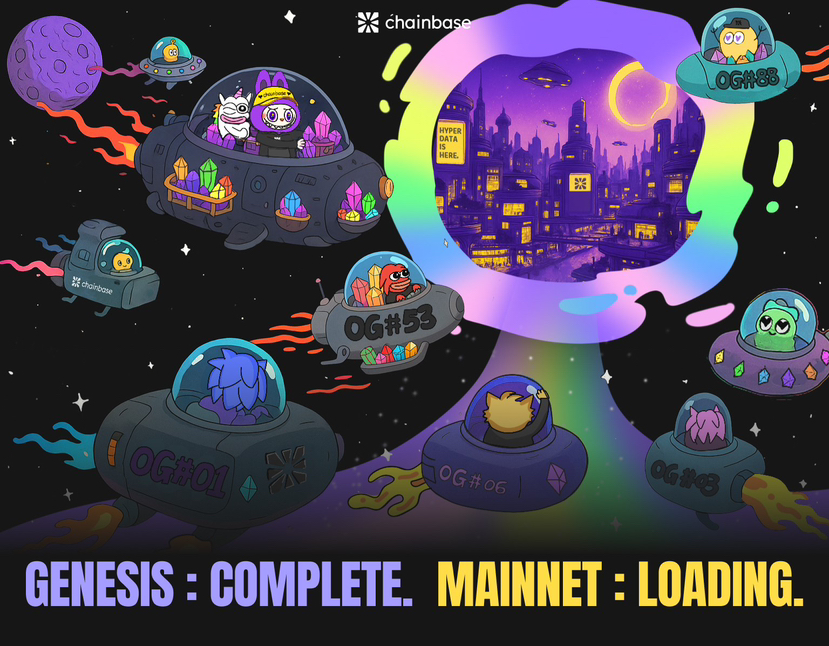Is checking data harder than trading coins?
Let's be honest, you can lose money trading coins in the crypto circle and comfort yourself that 'the market is bad'; but if you’re checking on-chain data, and it takes forever with errors, that can really make you want to smash your keyboard. Many developers have complained: 'Running a contract log took half an hour, and it’s still not finished; I suspect I wasted my youth on block synchronization.'
This is the awkwardness of Web3 data: it's neither fast nor accurate. So, Chainbase emerged, aiming to help everyone solve data issues, allowing developers to no longer be 'half an engineer + half a computer repairman,' but rather to write applications with peace of mind, and check data as quickly as ordering takeout.
What is Chainbase? In one sentence:
It is a decentralized data infrastructure, focusing on three main things:
1. Helps you clean data: tidying up the messy raw data on-chain;
2. Ensure data reliability: the verification mechanism goes through layers; don’t worry about someone feeding you counterfeit goods.
3. One line of code to pull data: developers can call APIs directly, aligning with Web2 development experience.
If on-chain data used to be like a warehouse filled with dust, Chainbase is like a smart housekeeper: helping you clean, classify, label, and finally deliver it to your table.
Why is it popular? Let’s break it down.
1. Three-layer architecture, with clear divisions of labor like cooking: cleaning layer: equivalent to chopping and washing vegetables, handling the raw data's 'dirty' appearance; verification layer: like a chef tasting, confirming the taste is right; interface layer: finally, the plate is served, and the API is ready to use.
You no longer have to run nodes or synchronize on-chain logs yourself; Chainbase does it for you.
2. Multi-chain support, not picky.
Not only supports Ethereum but also connects a bunch of public chains such as BNB Chain, Polygon, Solana, etc. What do you want to do? NFT analysis? DeFi protocol monitoring? GameFi player retention? Chainbase can provide you with data support.
3. Development experience like Web2, not discouraging.
Honestly, many people are discouraged from Web3 because it is 'too complicated.' Chainbase has made the interface similar to traditional cloud services; if you know how to write API calls, you can easily work with Web3.
C token: not just a ticket but also fuel.
Chainbase, of course, has its own token C.
Query fuel: every time you request data, you have to spend C, just like paying for takeout.
Node rewards: nodes running data provide computing power and receive C as a reward.
Governance rights: holders can vote to decide which new chains to list on the platform and how to adjust parameters.
It's like you are both a user and a shareholder, and you can also act as a boss making decisions.
Application scenarios: it’s not just checking wallet balances.
1. DeFi Risk Control.
For example, if a lending platform wants to know whether a certain wallet is a deadbeat, Chainbase can quickly provide an answer by checking past transaction data.
2. NFT Analysis.
Want to see if a certain NFT project is 'really lively' or just a bot inflating numbers? Just pull the transaction records and wallet interaction data, and you can see clearly at a glance.
3. GameFi Operations.
How many players in a game are real people and how many are scripts? Chainbase's data can help reveal this directly.
Simply put, it saves project teams the effort of 'guessing,' letting the data speak for itself.
Pros and cons: don’t just boast, also throw some cold water.
Advantages:
Data processing is fast, and the developer experience is good;
Covers multiple chains, applicable in many scenarios;
C token has real use, not just hot air;
Backed by VCs, with abundant ecological resources.
Risks:
There are quite a few competitors, such as The Graph, Covalent, etc.;
Data validation is strong, but to achieve full resistance to attacks, long-term iteration is still needed;
Whether the economic model of token C can work still needs time to test.
What can we compare Chainbase to?
It is the Meituan delivery of the crypto circle: you don’t have to cook (run nodes) yourself; just place an order, and clean data will be delivered directly to your door.
It is the Excel of Web3: previously full of garbled text, now it gives you organized tables that you can check anytime.
It is the liver-protecting artifact for developers: no need to stay up all night running logs, saving a few strands of hair, and projects can go live faster.
In conclusion: a down-to-earth summary.
Developing Web3 applications used to be like panning for gold in ruins; not only were you exhausted and covered in dust, but you might also end up empty-handed.
Chainbase transformed the ruins into a supermarket; you just need to pick, check out, and use.
In one sentence: Chainbase allows developers to lose fewer hairs, sleep more, and spend their time on real innovation. As for the C token? It's like a supermarket membership card; the more people shop, the more valuable it becomes.
@Chainbase Official #Chianbase $C